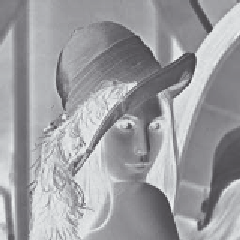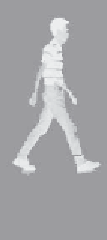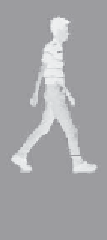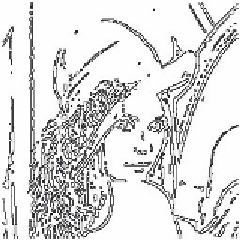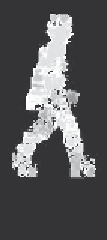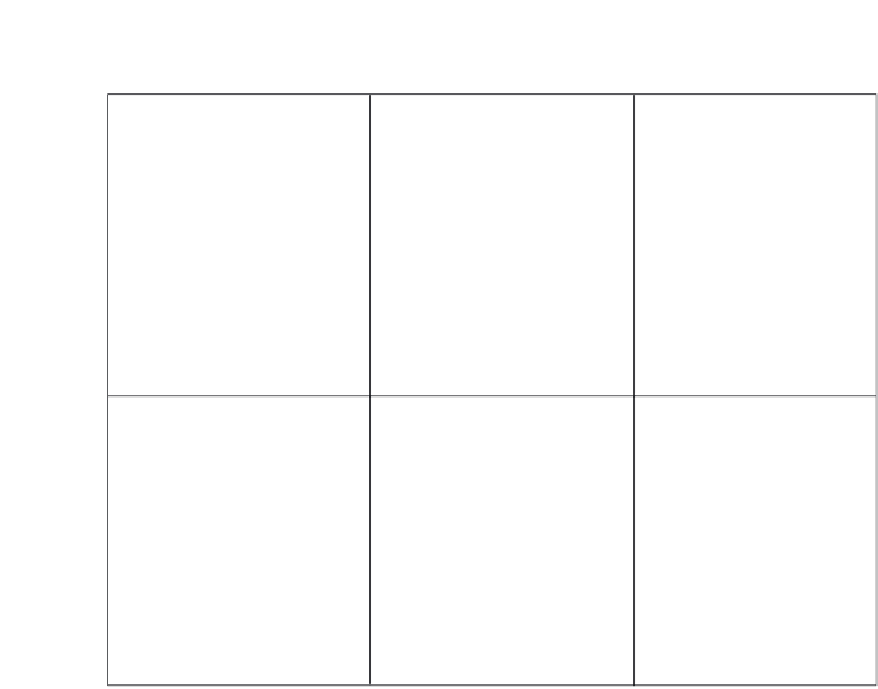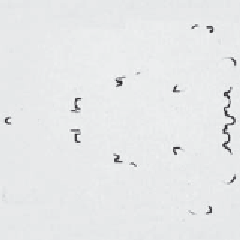Image Processing Reference
In-Depth Information
(a) Face image
(b) Plane silhouette
(c) Consecutive images of
walking subject
(d) Edge detection
(e) Curvature detection
(c) Motion detection
Figure 4.1
Low-level feature detection
vertically adjacent points. This will determine
horizontal
intensity changes, but not
vertical
ones so the vertical edge detector detects the
horizontal
edges,
Ey
, according to:
Ey
x
,
y
= |
P
x
,
y
-
P
x
,
y
+1
| ∀
x
∈ 1,
N
;
y
∈ 1,
N
- 1 (4.2)
Figures
4.2
(b) and (c) show the application of the vertical and horizontal operators to
the synthesised image of the square in Figure
4.2
(a). The left-hand vertical edge in Figure
4.2
(b) appears to be beside the square by virtue of the forward differencing process.
Likewise, the upper edge in Figure
4.2
(b) appears above the original square.
Combining the two gives an operator
E
that can detect vertical and horizontal edges
together
. That is
E
x
,
y
= |
P
x
,
y
-
P
x
+1,
y
+
P
x
,
y
-
P
x
,
y
+1
| ∀
x
,
y
∈ 1,
N
- 1
(4.3)
which gives:
E
x
,
y
= |2 ×
P
x
,
y
-
P
x
+1,
y
-
P
x
,
y
+1
| ∀
x
,
y
∈ 1,
N
- 1 (4.4)
Equation 4.4 gives the coefficients of a differencing template which can be convolved with
an image to detect all the edge points, such as those shown in Figure
4.2
(d). Note that the
bright point in the lower right corner of the edges of the square in Figure
4.2
(d) is much
brighter than the other points. This is because it is the only point to be detected as an edge
